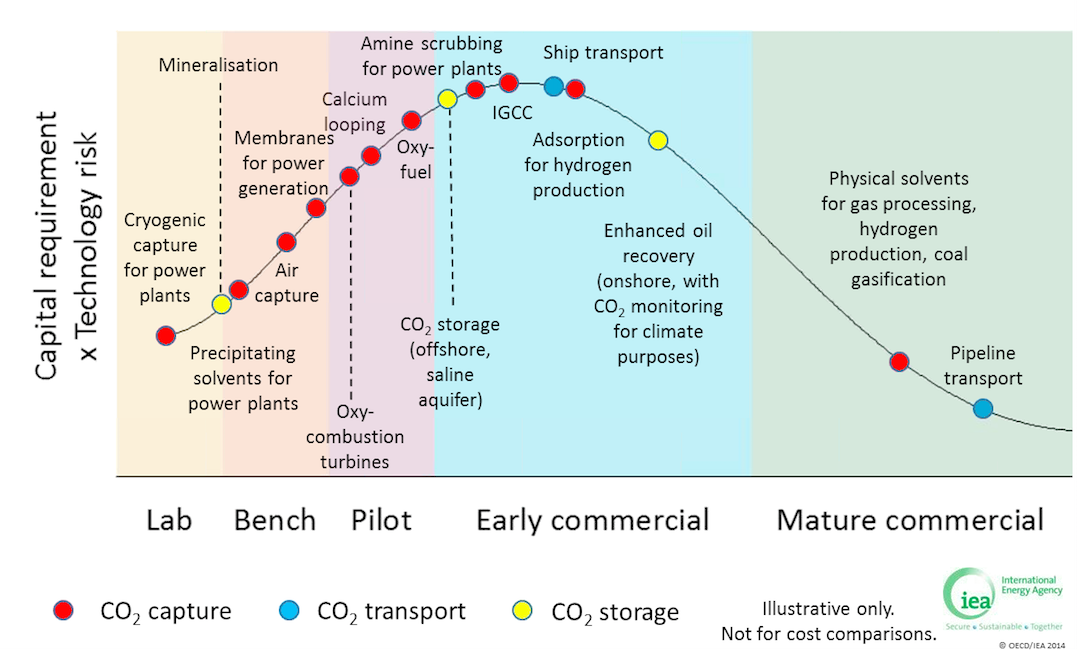- Published on
Challenges surrounding CCS
- Authors
-
-

- Name
- Vivienne Roberts
- in/viviroberts
-
As mentioned in a previous post earlier this week, the IEA’s CCS roadmap had a number of targets and plans laid out, with priorities on actions required before 2020. They mention that a number of these are not where they had hoped by 2014, and there has been a delay in pushing CCS projects and programmes forward.
There are big challenges associated with CCS projects. Their size and scale leads to complexity, as does the requirement to integrate numerous stakeholders, technologies and systems, along a number of value chains. On top of all of this, there is a lack of understanding as to why CCS is important, and discussions around whether there is even a need to reduce or remove CO2 emissions does not help.
So what, at a very high level, are some of the key challenges that are being encountered?
The scale of CCS required:
It’s estimated that, in order to reduce global emissions by 10% (keeping in mind that the IEA targets 14% by 2050), the volume of CO2 needed to be captured and stored annually is roughly the same as the volume of oil produced. This is not an insignificant target, and it is likely that the majority of centralised power systems will need some form of carbon capture technology installed to achieve this. This means retrofitting or incorporating into new builds, and there are naturally impacts on energy generation efficiency. There is also a lot of work required to move technologies forward, and to prove the effectiveness and efficiencies of the capture, transportation and storage technologies.
[Source: IEA Technology Perspectives 2015 presentation.]
Integration of many individual technologies and processes in a single system
The targets are big, the infrastructure required is vast and the CCS system encompasses the capture, transportation and ultimate storage of CO2; three unique, distinct and technically complex sectors, all with their own regulatory hurdles and policy related challenges.
There are also a number of stakeholders who are involved or need to be consulted to get CCS projects off the ground. The public and private sectors need to work together, as public and private infrastructure interfaces are impacted, and government policy leads to changes in private sector spend and operations.
Costs
The cost of separating carbon is largely dependent on the industrial or power generation process involved. This capture and compression process can be responsible for around 70-90% of the overall CCS expense. Costs relating to transportation are impacted by the need for new infrastructure and storage costs can vary greatly, depending on the nature of storage being pursued.
There is a lot of emphasis within the CCS sector on the importance of R&D and on large scale demonstration projects in order to a) improve the predictability of costs associated with CCS and b) bring those predictable costs down.
The financial case for CCS is also largely driven by carbon pricing, and the inclusion of CO2 emissions in power prices or in the input costs for industrial processes.
[Source: IEA Insight Series 2014, CCS Legal and Regulatory Review]
Awareness and public interest
A lack of concern by the public on the seriousness of climate change will naturally lead to a lack of understanding as to the value of CCS, and the urgency related to the permanent removal of CO2 from the industrial and power sector processes. Motivating for the allocation of funding to research and development and to demonstration projects will be harder where there is not public support, particularly given the high R&D and capital costs associated with CCS technologies.



